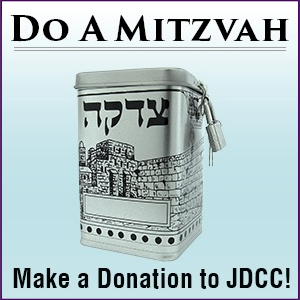
Example of ‘Get’ –
A Legal Bill of Divorce
Needed To Formally End
A Jewish Marriage
According To Jewish Laws
Getting A Jewish Divorce
The rate of divorce has been rising. This presents a more difficult problem for the Jewish community. Not only does a Jewish couple get legally divorced by getting a civil decree signed by a judge, they also need to get a Jewish bill of divorce, called a ‘get’ which is needed to formally end a Jewish marriage according to Jewish laws. ‘Get’ is the Hebrew word for ‘divorce document’.
What Is A Jewish Divorce
According to the Old Testament, a Jewish marriage is ended when the husband gives his wife a document, a ‘get’. This get is written by a scribe and presented in the presence of a rabbinic court and qualified witnesses. This court imposes a fee for this ‘Get’.
This tradition is based on the biblical verse “A man takes a wife and possesses her. If she fails to please him because he finds something obnoxious about her, he writes her a bill of divorcement, hands it to her, and sends her away from his house.. (Deuteronomy 24:1).
According to scripture, says the ‘Reform Judaism’ magazine, the husband may grant his wife a divorce but not the reverse which, over the centuries, has led to many abuses. Husbands have extorted sums of money from wives before granting them a ‘Get’.
Why Is A ‘Get’ Needed?
According to Jewish law, neither person can remarry until the wife accepts a ‘get’ from her husband. Without the ‘Get’, any children borne by the woman would be considered illegitimate and do not get the status of children born to a Jewish mother.
This stigma would mean that the child, often called mamzerim, cannot marry another Jew unless that Jew is also in the same situation, i.e. a mamzer.
Traditional Jewish law (Halacha) and traditional Judaism i.e. Orthodox and Conservative rabbis may require a ‘Get’ for the dissolution of a marriage before either couple can remarry although men may be allowed to remarry because both the Bible and the Talmud allowed polygamy. The Reform movement eliminated the requirement for a ‘Get’ and does accept civil divorce “as of absolute validity”. The government of the State of Israel also requires a ‘get’ as formal dissolution of a marriage between two Jewish people.
A divorced woman without a ‘Get’ would most likely face a hard time marrying a man who is Orthodox or Conservative. For this reason, some Reform Rabbis counsel their congregants to consider getting a ‘Get’.
According to the Kayama’s website, many people feel that aside from any other considerations, a ‘Get’ provides them with a sense of emotional closure. If your marriage began with a Jewish ceremony, then it would only make sense for the marriage to end with one as well. In fact, given the consequences, you can understand why it’s even more important to have a rabbi at a divorce than at a wedding.
Who Is Responsible To Get The ‘Get’?
It is the responsibility of both the husband and wife to make the arrangements. Either party may initiate the process. Preventing Problems
In situations where two people get divorced, there is often so much anger that the husband may refuse to give his ex-wife a ‘Get’ and the ex-wife is stuck because she cannot remarry without the ‘get’. Or maybe both the man and the female are so angry they don’t want to talk to each other and this makes getting a ‘Get’ difficult.
Jewish press reports also indicate that an overwhelming number of problems in Jewish divorce involves men who, even though they got civil divorces, would refuse to give the ‘Get’ to their wives. They may withhold the ‘Get’ as means of bribery or blackmail involving money, property or access to children.
For that reason three options have become popular. One option is to include in the prenuptial agreement before getting married that obligates both partners to effect a religious divorce in the event of a civil divorce. Another way is to work with an organization that specializes in facilitating ‘Gets’ by serving as a third-party communicating with both couples. G.E.T. (which stands for ‘Getting Equitable Treatment), in Brooklyn, NY is one such organization as well as KAYAMA also in Brooklyn, NY. Both organizations provide trained volunteer staff members who work in close cooperation with rabbinic authorities and courts.
A third option has been to include the ‘Lieberman clause’ to the ketubah – the marriage contract. According to Jewish Telegraphic Agency writer Judith S. Antonelli, the clause, created by the late Rabbi Saul Lieberman, former head of the Jewish Theological Seminary, states that divorce disputes will be referred to the court, or bet din, of the Conservative movement, which shall decide on the necessary solutions…
Rabbi Abner Weiss of Congregation Beth Jacob in Los Angeles is a local expert in Southern California and was one of the people who suggested the ‘Prenuptial’ contract.
How The Get Ceremony Works
No religious rituals are involved in the ‘Get’ process. Jewish divorce proceedings have not changed much over the last several thousand years and it is similar to most present-day legal transactions. Under the direction of a Rabbi, the husband authorizes the scribe to draw up the divorce document (‘Get’) in front of two witnesses who then signs it and the husband presents it to the wife at which point the divorce takes effect.
The whole process takes about an hour. If you prefer his ex-wife a ‘Get’ and the not to see your ex-spouse, or if the two of you are in different locations, the ‘Get’ can be completed by use of a proxy or power of attorney. Although the ‘Get’ generally takes place in a rabbi’s office, it can be done in any location that is convenient to all of the parties.
The Divorce Document
A ‘Get’ makes no reference to responsibility or fault. It has no bearing or effect on any aspect of the civil settlement and does not does not subject either party to personal questions. As long as there is mutual consent, there is no need to state the grounds for divorce. Although religious in nature, the process involves no ceremonies, prayers, blessings, or professions of faith at all.
It is a no-fault document with twelve lines hand-written by an experienced scribe under the supervision of a Rabbi and signed by two authorized witness, and it terminates a Jewish marriage and certifies the fact that a couple is now free to remarry according to Jewish law.
Basically the ceremony goes as follows:
a) Each party acknowledges that they understand what is going to happen and that they are acting freely without coercion.
b) The husband authorizes the scribe to write the document.
c) The twelve line document is written by the scribe and signed by the witnesses. The writing and signing of the document generally takes 30-45 minutes.
d) The signed document is presented to the wife by either the husband or his proxy in the presence of witnesses. Once she accepts it, the divorce takes effect immediately and is final.
e) The ‘Get’ document itself remains in the files of the officiating rabbi. It is cut by the rabbi so that it can never be used or presented again. The rabbi subsequently issues a certificate of proof (pour) to both parties, attesting to the fact that a ‘Get’ was properly drawn up, delivered, and accepted, and that each party is free to remarry. This certificate is usually sent in the mail within a few weeks after the ‘Get’ has been done.
Normally, the entire proceeding takes less than two hours and does not require additional sessions.
What Does The ‘Get’ Cost?
Although the ‘Get’ process is quite beef, those who write the document and carry out the divorce need to be specially trained in many intricacies of Jewish law. The fee for the rabbi, scribe, and witnesses who actually perform the ‘Get’ is generally about $400.




